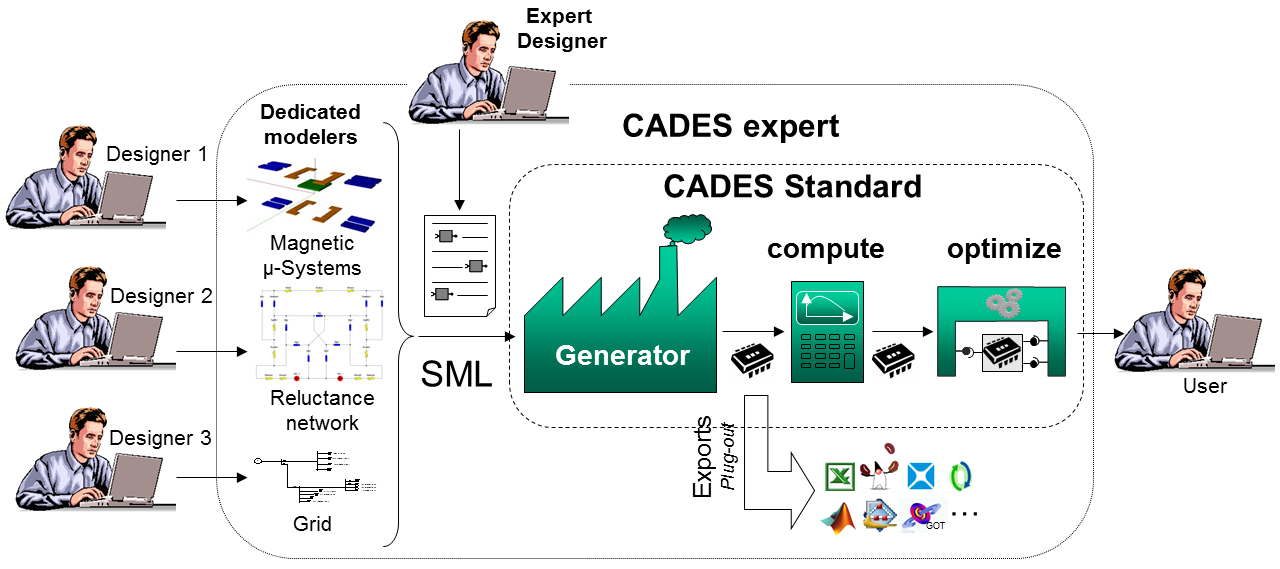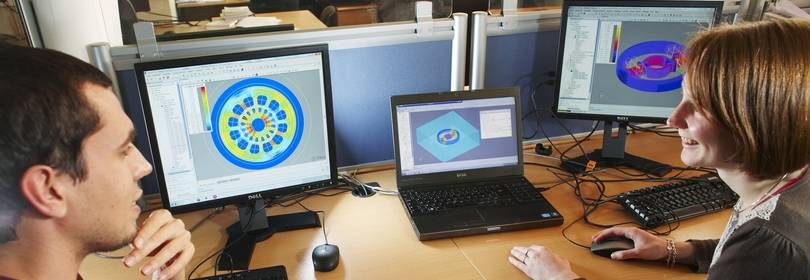Description
The direct optimization needs a well-suited model. The system modelling provides lightweight models allowing the optimizer a large number of objective-function in order to ensure a fast convergence.
But this need of speed is not enough, in fact, for highly constrained problems in engineering, it is important to have the information sensitivity of the model, i.e. the partial derivatives of calculated parameters ( output) from the input parameters. To do this, we have developed several methods:
- Symbolic derivation of equations of the model and some algorithms (integral electromagnetic models, implicit function theorem, ...),
- Automatic differentiation of computer programs

All these methods are implemented and used in the software suite CADES.

Références
- B. Delinchant , L. Estrabaud, L. Gerbaud, F. Wurtz “Multi-criteria design and optimization tools (53 pages)” chapter 5 of Integrated Design by Optimization of Electrical Energy Systems, Edited by Xavier Roboam, pp 193-245, Wiley ISTE (june 2012).
- Rakotoarison, H.L., Ardon, V., Chadebec, O., Delinchant, B., Guerin, S., Coulomb, J.-L. Formal Sensitivity Computation of Magnetic Moment method, IEEE Transactions on Magnetics, vol. 44, Issue 6, June 2008, pp. 1014 - 1017, ISSN: 0018-9464
- P. Enciu, F. Wurtz, L. Gerbaud, B. Delinchant Automatic differentiation for electromagnetic models used in optimization, COMPEL: The International Journal for Computation and Mathematics in Electrical and Electronic Engineering; Vol 28, Issue: 5, pp 1313 - 1326, 2009, ISSN: 0332-1649


